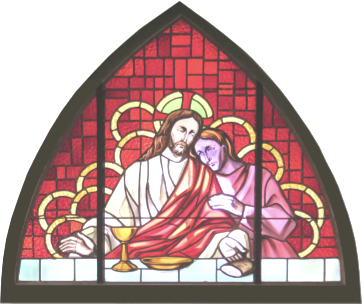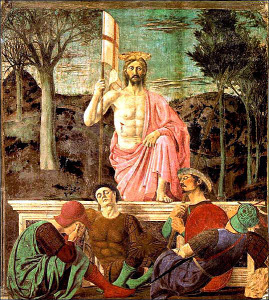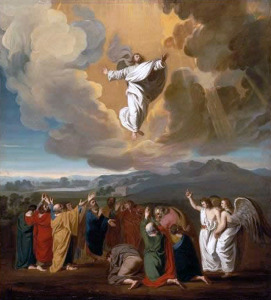 Blessed Sacrament Church
Blessed Sacrament Church
December 4, 2016
Church Repair Status & Update
This week: The original 1913 storm sewer lines have been excavated out of the dirt basement floor. The removal of this old line will now prevent ground water from moving around inside of the church basement floor.
Church Sound System Replacement – GV Audio finished tuning the new microphones for the presider, lectern and cantor to the acoustic characteristics of the church interior. The “Assisted Listening” unit is installed and working so that the hearing impaired can use a simple mobile FM radio with earbuds.
Church Boiler System – DMA Applied Controls has completed programming of the boiler controls, provided detailed schematics, comprehensive hardware and software documentation, as well as schedules, graphics, trend logs and alarms. We have a fully functional Building Management System to manage and monitor the church and rectory heating system.
Church Basement Underpinning – The transept underpinning process produced a large amount of ground which needs to be removed from the church basement. The 1950’s above ground cast iron storm sewer lines will also be removed from the church basement. The structural slab for the bell tower base still needs to be poured. The underpinning project will be completed when the church basement entrance has been repaired.
Major Milestones – Underpinning Project
- Underpinning of 1913 basement section completed
- New sub-floor in the church has been completed
- Church floor in the 1905 section is successfully levelled
- Underpinning of 1905 basement Section completed
- Underpinning piles for Bell Tower completed
- New adjustable columns in 1905 section installed & working
- New adjustable columns in 1913 section installed & working
On February 17. 2016 the Diocesan Administrator approved our request to underpin the church floor and bell tower after receiving recommendations from both the College of Consulters and the Archdiocesan Finance Council. The underpinning project is estimated to require three (3) months to complete.
CALL for PRAYERS & BENEFACTORS: Please pray that the God of Providence will provide Blessed Sacrament Parish with benefactors, who will provide the financial funds needed for the structural repairs to the church floor, bell tower and roof, as well as the replacement of the deteriorated roof shingles. The church remains closed, as we seek benefactors, contractor quotes and approval of funds to proceed as planned.
CALL FOR GRATITUDE: Blessed Sacrament is the oldest Roman Catholic parish in the city of Regina. The church is the second oldest building in Regina. While the building is historically significant, our parish serves many needs of people who live and work in downtown Regina; from the poorest of the poor to the privileged. We need to give thanks to God, for 111 years of Time, Talent & Treasure provided by our benefactors, parishioners, contractors, engineers, lawyers, and our parish finance council members.
Completed Projects
Wilf Perreault Studio
Christmas Nativity Set Restoration
Originally imported from Italy, God knows how many years ago. We still have the original shipping crate. The figurines were severely chipped and broken. Wilf has made skillful repairs to the finest details and masterfully matched the original paint. We are very grateful for Wilf because he has generously given his time, talent and treasure to restore these Christmas treasures. Our Blessed Sacrament nativity set is once again beautiful and as good as new.
Breda Brother Builders
New Church Children’s Room and Washroom
Loretta Elford initially commissioned and paid the Breda Brothers to build a new Ambry for the Holy Oils of Chrism, Catechumens and Oil of the Sick. During their site visit for the Ambry, the Breda Brothers were asked if they might be interested in building a new children’s room and washroom at the west church entrance. Marino Breda asked if we wanted to repurpose the wooden confessional to retain the original look of the space. The Breda Brothers have completed the new children’s room and washroom, as well as integrating the original confessional facade to retain the look, feel and balance of the space. This project is on time and on budget.
The Breda Brothers also safely removed the communion rail to facilitate the floor replacement renovations. The communion rail is part of Blessed Sacrament’s spirituality and it will be reinstalled once the floor renovations are completed. The Breda Brothers restored the East Rose Window frame (i.e. The Blessed Sacrament stained glass window) which had suffered deterioration from exposure to the weather elements. They also removed the stained glass window in the Children’s Room, braced the exterior brick wall and removed the bells to avert a catastrophic failure of the bell tower.
Eagle Electric Service
New Ceiling Fans & Overhead Sanctuary LED Lighting
New ceiling fans provide air flow during hot summer months and energy savings during the winter months. New forced-air attic fans are being installed to improve air flow during the summer months and lower humidity in the attic during winter months. This project went over budget with the change to high-effecincy and high-output LED lighting in the church sanctuary.
LED lighting has been installed behind the center portion of the three large stained glass rose windows. The new All Weather exterior windows required cross beams, which partially prevent outside light to fully illuminate the center portion of the rose windows. The LED lighting removes the shadow from the cross beams so that the center symbols are visible.
Arrow Plumbing & Heating
Rectory Sewer Line Replacement
This project is completed on time and on budget to replace the rotten cast iron sewer lines beneath the rectory floor and the in floor cast iron lines from the washrooms.
Town & Country Plumbing & Heating
Church Sewer Line Replacement
This project is completed on time and over budget because of the 60+ year old rotten lines buried deeper and right beside floor column structures. 200 feet of old cast-iron lines have been replaced with new commercial grade PVC lines. This project has revealed long-standing causes of floor/foundation instability, as well as “the last straw” contributing to structural failures in the bell tower and church roof. Floor renovations have been halted until the church floor columns and bell tower are properly underpinned.
Action Sewer & Drain Services
Re-line under the church & rectory foundations
This project is completed on time and was over budget because the main sewer line from the church basement to the rectory also needed to be relined. Action Sewer has helped identify the original 1905 storm sewer lines that are buried beneath the church basement floor. These old lines are full of ground water which saturates a good portion of the 1913 church basement floor. The 1913 and 1950’s storm sewer lines in church basement will be removed to reduce the amount of ground water and moisture in the church basement.
Jordan Asbestos Removal
Remove Old Church Tiles & Clean-Out Bell Tower
The old tiles on the church floor have been removed and this project is on budget. Cleaning out 110 years of “bird stuff” in the bell tower had to be done without a budget, so that contractors could safely remove the church bells.
BBK Structural Engineers
Church Foundation, Bell Tower & Floor Structures
BBK has providing engineering specifications to underpin the floor/roof columns and bell tower, as well as design a new structural-skeleton for the bell tower. These structural projects could no longer be ignored as in the past. The church underpinning project has installed new piles and adjustable floor/roof columns. The four church transept columns required custom pile designs for the underpinning process. The original 1913 transept columns were not replaced with adjustable columns to level the church floor because of the structural load they must bear. Consequently the church floor between the four transepts could not be lowered to improve upon the floor levelling process.
Raydon Castle Building Center
General Contractor to provide All-Weather Windows
Top-Line Construction—Contractor to template and install New Church Windows. All-Weather Windows—Manufacturer to Custom Build New Church Windows. Philly’s Painting—for the church and rectory windows and doors; painting is on budget.
The new windows replace the sun-faded Lexon sheets, which made the church look like a bunker from the outside. The old Lexon sheets where only intended to protect the stained glass windows; they did not stop dust and snow from literally blowing into the church through the stained glass window frames.
The new All-Weather glass windows attractively display the full beauty of the stained glass windows from the outside, improve the amount of light entering the church, as well as provide protection, a proper weather seal and high-efficiency energy savings.
All of the new windows are installed with the exception of the south-west washroom and the bell tower windows. These last two windows will be installed once the structural repairs to the bell tower and roof are completed and the stained glass window in washroom has been reinstalled. This project is on budget.
Project Management
by Rev. Barry J. Anwender, P.Eng., BSc., MDiv.
Pastor, Blessed Sacrament Parish
In collaboration with the Finance Councils
of Blessed Sacrament Parish
and the Archdiocese of Regina.




